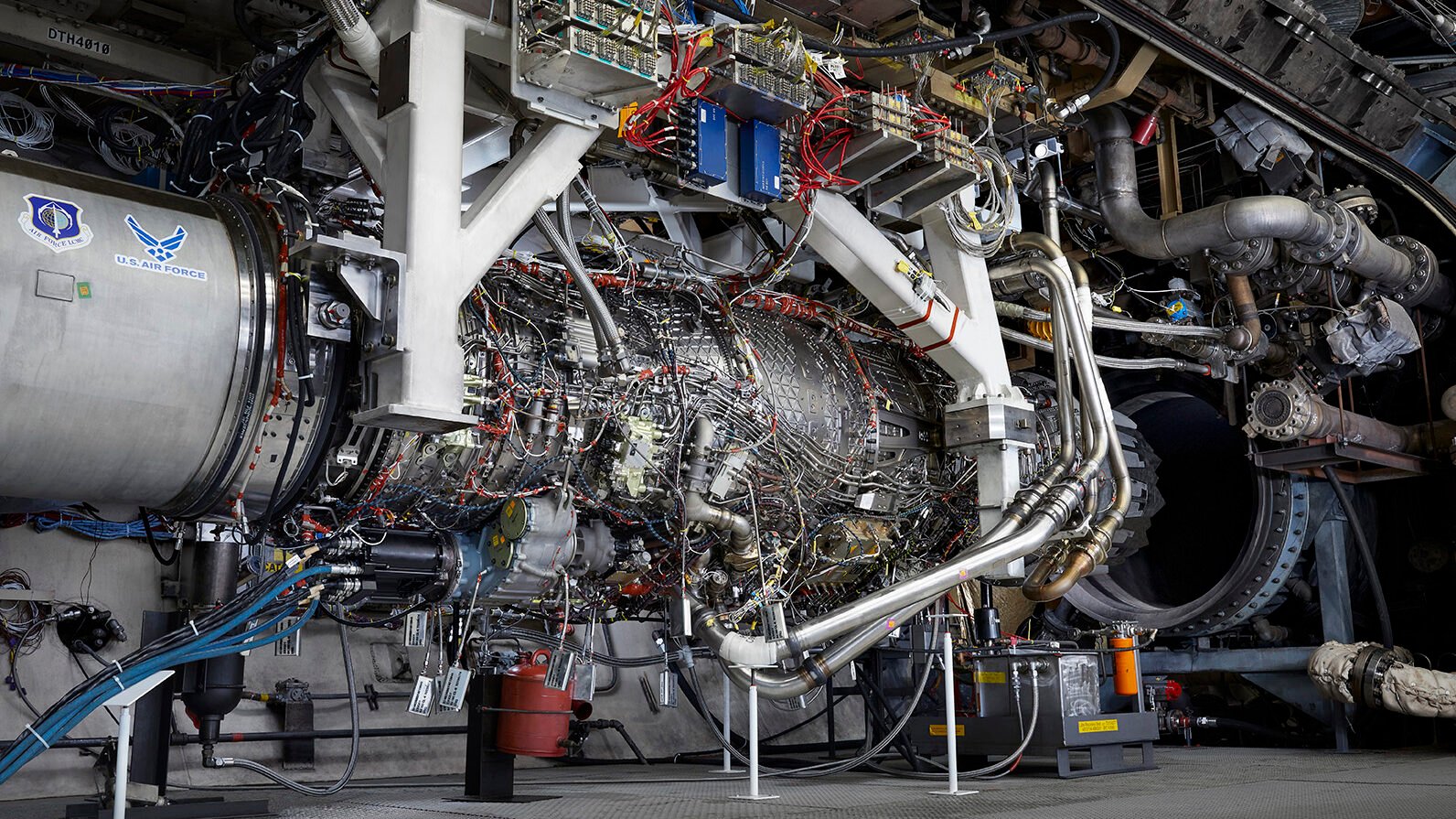
GE’s first XA100 prototype engine readies for testing in an Evendale, Ohio, test cell. (General Electric)
DAYTON, Ohio — The US military’s industrial base for advanced fighter engines could be on the verge of “collapse” if the Air Force decides to not pursue a new adaptive engine for the F-35, an Air Force official said on Thursday.
Currently, the Air Force is deliberating whether to move forward into the next phase of the Adaptive Engine Transition Program (AETP), which would produce a new engine for the F-35 Joint Strike Fighter.
Canceling AETP would leave the Air Force with only one advanced engine development program — the Next Generation Adaptive Propulsion effort that will eventually power the manned, sixth-generation fighter set to be a part of the service’s Next Generation Air Dominance family of systems. That effort is set to narrow down to a single vendor by the end of 2024, said John Sneden, director of the service’s propulsion directorate.
“If we end up with one vendor there, and we don’t move forward with AETP, that vendor could actually get us into a place where we have, essentially, a reduced advanced propulsion industrial base. So we are concerned about it,” he told reporters during the Air Force’s Life Cycle Industry Days conference.
“The perception I think that’s out there is that we’re maintaining, if not advancing, our military advantage in propulsion. And that’s always been because we’ve always had the world’s greatest advantage in propulsion,” he said. “But the reality is that our lead is starting to — we’re essentially stagnating, and we’re starting to lose.”
RELATED: F-35 engine rivals prepare for another clash
While Pratt & Whitney, General Electric and Rolls Royce dominate the propulsion market for military aviation, only Pratt & Whitney and GE are involved in AETP and NGAP.
The service hasn’t fielded a new fighter engine since Pratt & Whitney’s F135 engine, which currently powers the F-35, and the service’s most recent tactical aircraft programs such as F-15EX and the T-7A Red Hawk trainer all leverage existing legacy engines.
Due to the classification of the Next Generation Air Dominance program, few details are known about the two NGAP designs. Sneden said it will be first engine completely developed in a digital environment using model-based engineering, which will make it easier to upgrade as new threats emerge.
Currently, the competitors are working through preliminary designs, but financial constraints will likely force the Air Force to choose a single design to take into prototype in “in roughly the late 2024 timeframe,” he said.
Meanwhile, two AETP prototypes — GE’s XA100 and Pratt & Whitney’s XA101 — are going through stand testing, with the Defense Department set to decide whether to start the engineering, manufacturing and development phase of the program as part of FY24 budget deliberations.
If that occurs, the department would be ready to run a competition and downselect a single vendor in FY24, Sneden said.
He noted that both AETP engines are “performing beautifully” and have proven they can meet requirements for a 25 percent increase in range, 10 percent increase to thrust and double the power management compared to the F135. That “frankly far exceeds the capability of anything else out there,” Sneden said.
However, those engines are not built to support the short takeoff and vertical landing capability of the F-35B — meaning that it will be down to the Air Force, Navy and Marine Corps to weigh whether they are willing sacrifice commonality and take on greater cost in exchange for a major boost to performance.
Meanwhile, the department could also choose a less expensive upgrade package for the F135, which Pratt & Whitney says could increase the engine’s range and thrust by as much as 10 percent as well as doubling its thermal management capability.
Sneden, who is advocating for the Air Force to continue pursuing AETP, said both options will be come with significant price tags.
“Our perspective is that you can optimize for performance or you can optimize for tri-variant commonality. We think the warfighter deserves the performance attributes that AETP can deliver,” he said. “Winning is expensive and we can’t afford to lose.”
China’s new H-20 stealth bomber ‘not really’ a concern for Pentagon, says intel official
“The thing with the H-20 is when you actually look at the system design, it’s probably nowhere near as good as US LO [low observable] platforms, particularly more advanced ones that we have coming down,” said a DoD intelligence official.


























